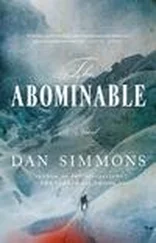Accordingly, in late May of 1847, Sir John prepared five sledge parties to look over the horizons in each direction, including one instructed to sledge back the way they had come, searching for any open water. They departed on May 21, 23, and 24, with Lieutenant Gore’s party – the crucial one – departing last and sledging toward King William Land to the southeast.
Besides reconnoitering, First Lieutenant Graham Gore had a second important responsibility – leaving Sir John’s first written message cached ashore since the beginning of the expedition.
Here Captain Sir John Franklin had come as close to disobeying orders as he ever had in his Naval lifetime. His instructions from the Admiralty had been to erect cairns and to leave messages in caches for the length of his exploration – should the ships not appear beyond the Bering Strait on schedule, this would be the only way for Royal Navy rescue ships to know in which direction Franklin had headed and what might have caused their delay. But Sir John had not left such a message at Beechey Island, even though he had almost nine months to prepare one. In truth, Sir John had hated that first cold anchorage – had been ashamed of the deaths of the three crewmen by consumption and pneumonia that winter – so he had privately decided to leave the graves behind as the only message he needed to send. With any luck, no one would find the graves for years after his victory of forcing the North-West Passage had been bannered everywhere in the world.
But it had now been almost two years since his last dispatch to his superiors, so Franklin dictated an update to Gore and set it in an airtight brass cylinder – one of two hundred he’d been supplied with.
He personally instructed Lieutenant Gore and Second Mate Charles Des Voeux on where to put the message – into the six-foot-high cairn left on King William Land by Sir James Ross some seventeen years earlier at the westernmost point of his own explorations. It would be, Franklin knew, the first place the Navy would look for word of his expedition, since it was the last landmark on everyone’s maps.
Looking at the lone squiggle of that last landmark on his own map in the privacy of his cabin on the morning before Gore, Des Voeux, and six crewmen set out, Sir John had to smile. In an act of respect seventeen years ago – not to mention an act now generating some minor irony – Ross had named the westernmost promontory along the shore Victory Point and then named the nearby highlands Cape Jane Franklin and Franklin Point. It was as if, Sir John thought, looking down at the weathered sepia map with its black lines and large unfilled spaces to the west of the carefully marked Victory Point, Destiny or God had brought him and these men here.
His dictated message – it was in Gore’s handwriting – was, Sir John thought, succinct and businesslike:
____________________ of May 1847. HM Ships Erebus and Terror… Wintered in the Ice in Lat. 70°05′ N. Long. 98°23′ W. Having wintered in 1846-7 at Beechey Island in Lat. 74°43′28″ N Long. 90°39′15″ W after having ascended Wellington Channel to Lat. 77° – and returned by the west side of Cornwallis Island. Sir John Franklin commanding the Expedition. All well. Party consisting of 2 officers and 6 Men left the ships on Monday 24 th.May 1847. Gm. Gore, Lieut. Chas. F. Des Voeux, mate.
Franklin instructed Gore and Des Voeux to sign the note and fill in the date before sealing the canister and setting it deep inside James Ross’s cairn.
What Franklin hadn’t noticed during his dictation – nor Lieutenant Gore corrected – was that he had given the wrong dates for their winter at Beechey Island. It had been the first winter of 1845-46 in their sheltered ice harbour at Beechey; this year’s terrible time in the open pack ice had been the winter of 1846-47.
No matter. Sir John was convinced that he was leaving a minor message to posterity – possibly to some Royal Navy historian who wished to add an artifact to Sir John’s future report on the expedition (Sir John fully planned to write another book, the proceeds of which would bring his private fortune almost up to that of his wife’s) – and not dictating a report that would be read by anyone in the immediate future.
On the morning that Gore’s sledge party set out, Sir John bundled up and went down onto the ice to wish them Godspeed.
“Do you have everything you need, gentlemen?” asked Sir John.
First Lieutenant Gore – fourth in overall command behind Sir John, Captain Crozier, and Commander Fitzjames – nodded, as did his subordinate, Second Mate Des Voeux, the mate flashing a smile. The sun was very bright and the men were already wearing the wire-mesh goggles that Mr. Osmer, Erebus ’s purser, had issued them to prevent blindness from the sun’s glare.
“Yes, Sir John. Thank you, sir,” said Gore.
“Plenty of woollies?” joked Sir John.
“Aye, sir,” said Gore. “Eight layers of well-woven good Northumberland sheep shearings, Sir John, nine if one counts the woolen drawers.”
The five crewmen laughed to hear their officers banter so. The men, Sir John knew, loved him.
“Prepared for camping out on the ice?” Sir John asked one of the men, Charles Best.
“Oh, aye, Sir John,” said the short but stocky young seaman. “We have the Holland tent, sir, and them eight wolfskin blanket robes what we sleep on and under. And twenty-four sleeping bags, Sir John, which purser sewn up for us from the fine Hudson ’s Bay blankets. We’ll be toastier on the ice than aboard the ship, m’lord.”
“Good, good,” Sir John said absently. He looked to the southeast where King William Land – or Island, if Francis Crozier’s wild theory was to be believed – was visible only as a slight darkening of the sky over the horizon. Sir John prayed to God, quite literally, that Gore and his men would find open water near the coast, either before or after caching the expedition’s message. Sir John was prepared to do everything in his power – and beyond – to force the two ships, as beaten up as Erebus was, across and through the softening ice, if only it would soften, and into the comparative protection of coastal waters and the potential salvation of land. There they might find a calm harbour or gravel spit where the carpenters and engineers could make repairs enough to Erebus – straightening the propeller shaft, replacing the screw, shoring up the twisted internal iron reinforcements and perhaps replacing some of the missing iron cladding – to allow them to press on. If not, Sir John thought – but had not yet shared the thought with any of his officers – they would follow Crozier’s distressing plan from the previous year and anchor Erebus , transfer its diminishing coal reserves and crew to Terror , and sail west along the coast in that crowded (but jubilant, Sir John was sure, jubilant) remaining ship.
At the last moment, the assistant surgeon on Erebus , Goodsir, had implored Sir John to allow him to accompany the Gore party, and although neither Lieutenant Gore nor Second Mate Des Voeux were enthusiastic about the idea – Goodsir was not popular with the officers or men – Sir John had allowed it. The assistant surgeon’s argument for going was that he needed to gain more information on edible forms of wildlife to use against the scurvy that was the primary fear of all arctic expeditions. He was particularly interested in the behavior of the only animal present this odd non-summer arctic summer, the white bear.
Now, as Sir John watched the men finish lashing their gear to the heavy sledge, the diminutive surgeon – he was a small man, pale, weak-looking, with a receding chin, absurd side whiskers, and a strangely effeminate gaze that put off even the usually universally affable Sir John – sidled up to start a conversation.
Читать дальше












